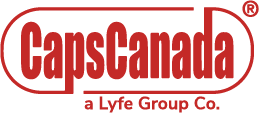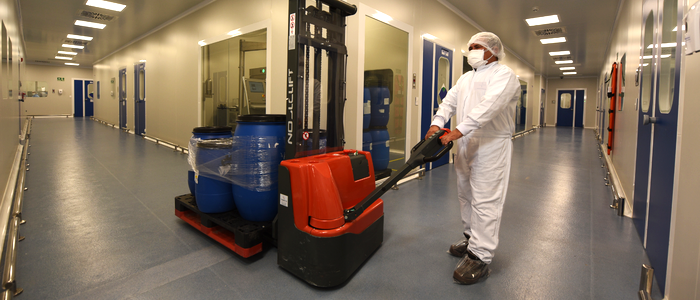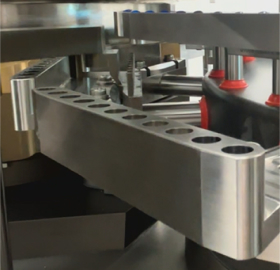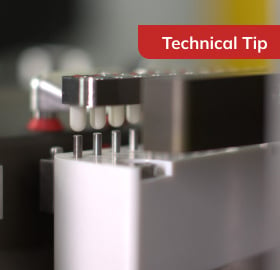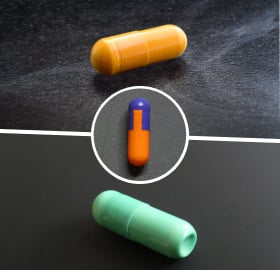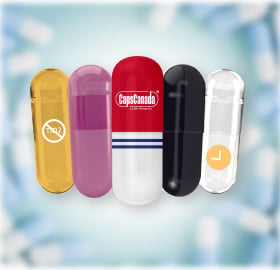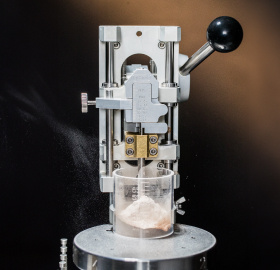It’s time for a pop quiz! The 5S methodology is a process associated with lean manufacturing methods that is used to create and maintain a more organized and productive workspace. That said, which of the following statements about 5S are true?
The 5S methodology…
1. Reduces defects and waste.
-
2. Reduces machinery downtime.
-
3. Makes quality control.
-
4. Increases efficiency and productivity.
-
5. Makes the workplace safer.
-
6. Is very confusing to implement.
The answer: All of these statements about the 5S methodology are true except #6. Implementing the 5S methodology is actually very logical and straightforward. In fact, since the 5S methodology was first implemented by Toyota in the 1970s, countless businesses have found that this type of workplace organization can lead to all of the benefits listed above…and more.
5 proven steps for workplace organization
“5S” stands for the five Japanese words that described the 5S methodology’s five steps:
Step #1: Seiri – Sort
Step #2: Seiton – Set in order (also called “Straighten”)
Step #3: Seiso – Shine
Step #4: Seiketsu – Standardize
Step #5: Shitsuke – Sustain
As you will see, 5S is a visual management system that promotes a continuous improvement mindset. Whether you are making pharmaceuticals or supplements, the 5S methodology is extremely relevant for capsule manufacturing – even if you are not implementing other lean manufacturing tools.
Let’s take a look at how to implement the 5S methodology…
Step #1: Sort
Sorting is all about decluttering the workspace by separating those items that are wanted and needed in the space from those that are not.
The people who work in a specific workspace should consider every item that is in that space (or that should be in that space), including equipment, tools, parts, materials, instructions, etc. Answer the following questions:
• Should this item be discarded? For example, is it defective, obsolete or irreparably broken?
o If you are 100% certain that the answer is yes, discard it immediately.
• Is this item regularly used in the context of this work area?
o If yes, it is a “wanted and needed” item, so it stays.
o If no, but it belongs in another work area, move it to that work area.
• Is this item used in the context of this work area, but only occasionally or just for special cases?
o If yes, it stays, but is separated from the frequent-use items, so it can be placed further out of reach.
• Are you unsure if the item is needed?
o If yes, mark it with a red tag and move it to a designated holding area outside the work area.
This “red tag holding area” should be organized by review month. Be sure to include the name of the person who tagged the item, why it was tagged, the month in which the item should be re-reviewed and the name of the person who must sign off on the final decision regarding it.
Step #2: Set in order
This step in the workplace organization process is all about using smart organization to make it easy to find those things that were deemed “wanted and needed” in step #1. When everything is set in order, team members no longer waste time and energy hunting for needed items. Instead, everything they need is functionally placed to maximize safety and workflow.
With the 5S methodology there’s a place for everything and everything is in its place. Moreover, because this is a visual management approach to organization, once things are organized, the question of “where does a particular item belong” should be visually obvious. This increases efficiency and productivity.
Here are the steps to follow to set things in order:
• Use floor paint marking to define the working area and the “footprint” of any large items (such as machinery).
• Place each item in the best visible location based on its prevalence of use.
o Items that are used hourly, daily, or weekly should be the easiest to reach.
o If space is tight in the workstation, items that are used less frequently can be placed at a central point in the workplace.
• Keep similar items together.
o If appropriate, use containers.
o If appropriate, create shadow boards for tools. A shadow board has the outlines of each tool marked on it, to make it easy to see which tools are in use or missing.
• Label each item and label the place where it belongs.
o Also create other labels as appropriate, such as “open” and “shut” directional labels on switches, temperature labels, safety labels, zone labels (i.e. “danger” zone vs. “normal” zone) and more.
• Be sure that item placement is logical, so that it would be obvious to others, too.
o Avoid an arrangement that only makes sense to one person, but would not make sense to others in your organization who do the same job (such as someone on the next shift who works at the same station).
• Ensure that every item has a designated storage space.
Step #3: Shine
The shine step is all about keeping everything clean and in working order. However, this cleaning is not just about aesthetics; it is primarily about maintaining the object’s condition and fitness for use. The shine step includes routine inspections of tools, equipment and other items. It can also include routine maintenance as needed.
To make things shine:
• Clean everything.
o Using the appropriate cleaners and cleaning tools, clean all aspects of the workspace.
• Inspect everything.
o As you are cleaning, pay close attention to each item’s condition. Does it require maintenance or repair? For example, does it have loose bolts or dull blades?
o If necessary, disassemble larger items so that you can inspect the condition of its parts.
• Make cleaning a routine task.
o Clearly define who is responsible for cleaning, when cleaning will take place, and where the cleaning supplies will be kept.
In the context of capsule manufacturing, this step provides a number of benefits. First, pharmaceuticals and supplements must be made in a clean environment. Second, a clean and orderly environment is a safer environment. Third, regular cleaning and inspection will help prolong the life of your equipment. Finally, maintaining a clean environment helps you to identify problems and potential problems before they interfere with production. For example, in-depth equipment cleaning may reveal worn or damaged parts before they completely fail, such as cams and cam follower bearings.
Step #4: Standardize
Standardization is all about systemizing the first three steps of the 5S methodology so that it becomes a reproducible set of activities. The goal is to ensure that everyone in the company follows the same procedures, names items the same way, uses the same approach to workplace organization, etc.
To implement this standardization step you should…
• Document your procedures and guidelines for steps 1, 2 and 3
o Create checklists and train your people to use them.
o Organize your checklists by role, shift and frequency (i.e., daily, weekly, monthly).
o Create both “implementation” and “audit” checklists.
• Use visual management to quickly determine if things are clean and in order.
Step #5: Sustain
The fifth step is about committing to maintaining orderliness and practicing the 5S methodology on an ongoing basis. If you do not sustain your workplace organization, all of the work you put into getting things sorted, cleaned and in order will be for naught.
Ideas for getting everyone on board with sustaining your 5S practice include:
• Provide hands-on training.
• Create awareness about 5S through newsletters, posters, slogans, etc.
• Take a continuous improvement approach to 5S.
o Be agile, always looking for ways to make the tasks easier and more efficient.
• Have periodic audits and inspections to ensure 5S is being followed.
o This can be part of your quality control procedures.
• Remember to review the “red tag items” holding area each month or quarter.
• Recognize and reward the best performers.
• Consider forming a 5S committee composed of representatives from various departments of the company, to help with audits, improvement and rewards.
Conclusion
With the 5S methodology, every item in the workplace is useful, needed and kept in a designated “home.” The benefits of implementing this include having a workplace that is not just clean and well-organized—it’s also safer and more pleasant. Taking a 5S approach to workplace organization can make the workflow smoother, reduce equipment downtime, minimize waste and increase employee morale. All very desirable results!

